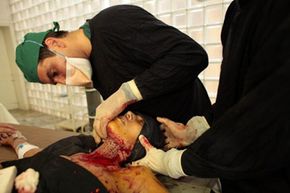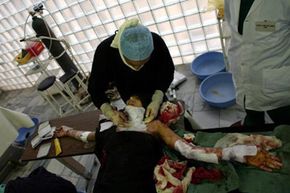Your skin is the largest organ in your body. It's also one of the most important. Why? Your skin performs essential functions like temperature regulation, hydration and protection against invading bacteria. If you fall on your bike and scrape away a thin layer of skin, the boo-boo will heal on its own. Unfortunately, the regenerative power of skin is no match for the hellish fury of fire.
The pain of a severe burn is almost unimaginable -- and so is the destruction it causes. Simply put, your body won't last very long without the skin's protection. Large, open wounds are highly susceptible to bacterial infections and if the body can't regulate its temperature and hydration, it will go into shock. For decades, the best treatment option for a severe burn has been a skin graft.
Advertisement
Skin grafts sound like something straight out of a medieval torture manual, but they save hundreds of thousands of lives every year. More than two million people in the United States require treatment for burns every year and between three and four thousand die from their injuries [source: Merck Manual].
To perform a skin graft, surgeons remove healthy skin from a patient's body and attach it to the wounded area. Extensive scarring is inevitable and the healing process can be long and painful, but the majority of patients will survive the treatment and return to their normal lives.
What are the injuries and conditions that require a skin graft? How is the surgery performed? And what are the latest breakthroughs in artificial skin technology? Keep reading to find out more.
Advertisement




